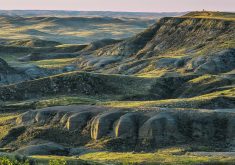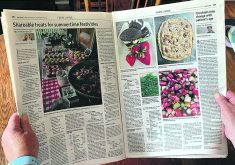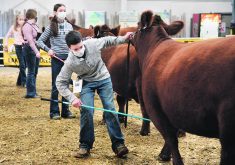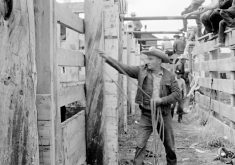It’s not often a movie director arrives in a community and the ideas for the upcoming film come from the community and not the director.
After director Scott Parker met community members in town halls and farms across southern Alberta and southern Saskatchewan, it was the residents who came up with the themes for the 10 National Film Board of Canada documentaries about their area.
“We had no plans to make 10 movies down there,” said Scott Parker.
It was while talking to NFB executive producer David Christensen about the area around Grasslands National Park in southwestern Saskatchewan that they began to recognize the NFB didn’t have a lot of films about the southern Prairies and that there was a need to capture the voices of the people.
“The films are reflective of the community. There are lots of different types of people that live there and we were just looking for films that people could get behind and look and say, ‘yeah, that reflects this area,’ ” said Parker, who grew up on a family farm in Maymont, Sask., but ended up living in Eastend, Sask., for six months while he filmed the movies.
Before the project began, Parker hosted a series of community town halls to talk about what the residents loved about living in the area and what should be the focus of the NFB films.
“People came to the meetings and people were really, really interested in talking about their stories and how they saw southern Alberta and southern Saskatchewan in Canada and in the world. The ideas for the films welled up from the communities.”
Three of the 10 documentaries in The Grasslands Project, filmed in 2015, will be featured as part of Perspectives from the Prairies, a year-long series of films launched in 2023 by the National Film Board of Canada and The Western Producer to celebrate the newspaper’s 100th anniversary. The themes of the three films feature youth, women and the importance of land preservation.
In the eight-minute film, A Rancher’s View, producer Miles Anderson of Fir Mountain, Sask., talks about the challenges of carrying on his century old ranch while surrounded on three sides by Grasslands National Park.
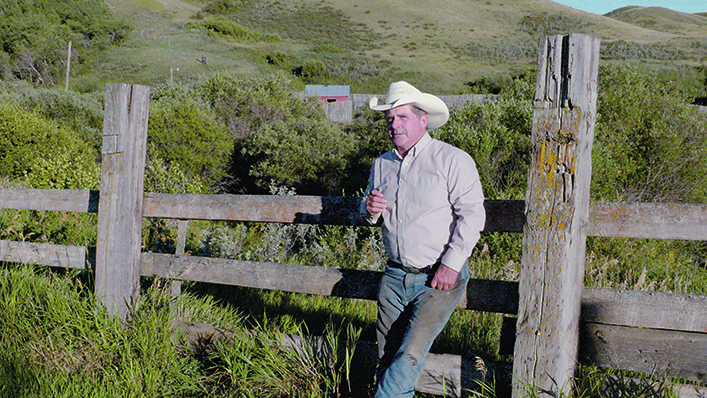
After the park was created in 1981 to preserve the mixed-grass and shortgrass prairie, no livestock were allowed to graze in the 225,000-acre park. Conflict soon arose between the park and local ranchers who had traditionally grazed the area.
A few years later cattle and bison were once again grazing in the park after Parks Canada recognized the importance of the animals to maintaining the prairie habitat, including the endangered greater sage grouse.
The endangered birds’ chick survival rate was higher on land grazed by cattle than with no grazing in the park. Anderson said working together proved better for the grass, the sage grouse, the land and the families in the area.
Managing the ecosystems is complex and no one is 100 percent happy with decisions to keep the cattle out or bringing them into the park, said Parker.
“Through collaboration, slowly, very slowly, it is heartening to me to see the voice of the ranchers listened to. That was rewarding.”
The eight-minute film Generations focuses on the farm transition of father and son Ken and Shawn Catherwood and their love of the farm and farming.
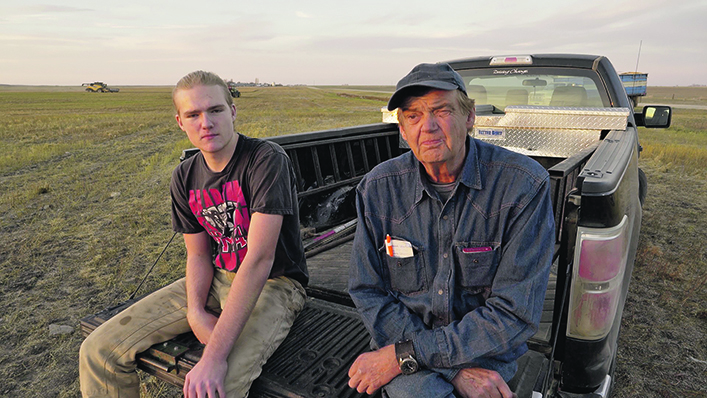
“These folks love their land, they love their farm, and the relationship between the older and younger generation is really, really amazing,” said Parker.
In the documentary, the pair finish combining a field of flax and Shawn says he wants to love farming as much as his father has for the past 50 plus years and continue the century old farm.
“When Shawn said the line about ‘I just want to love farming as much as my dad does,’ I just thought that was such a beautiful thing to say. They really look after each other,” said Parker.
While farm transition is not easy, in the film there is a respect for each other and the knowledge that each generation can learn from the other. At the beginning of the documentary, the father is topping up the grain truck with brake fluid and telling his son the importance of keeping the fluid behind the seat in the truck. The son talks to his father about crop rotation and the possibility of growing canola the following year on land that has been in Shawn’s name since age three.
“It was a beautiful film to make and just spend time with these people that I got to know,” said Parker.
The 11-minute film Life Out Here focuses on four women and the challenges of being a woman on the often-isolated farms and ranches. Parker said the key to the documentary was finding the right participants.
During the day of filming, Joan Hughson, Bonnie Pearson, Lee Harty and Larei King met at one house and a special camera allowed the women to talk directly into it, with the women interviewing each other.
“These groups of women came together to tell their own stories and I just facilitated and that’s why the film has so much authenticity. They were actually looking directly at the woman who was interviewing them. It was a very face-to-face conversation.”
Two of the women are widowed and two are younger and moved from the city to the farm and worked to find their place in the family farm operation.
After editing the films, Parker travelled back to the communities and screened them to standing-room-only crowds.
“People came in to watch these stories of their friends and neighbours and about situations that they cared about,” he said.
“It was really rewarding to have people come to me after the screenings with tears in their eyes just saying that’s exactly their stories and it’s so amazing to see them.”
The Grasslands Project Generations (2016) can be found here, The Grasslands Project A Rancher’s View (2016) is here and The Grasslands Project Life Out Here (2016) is available here. These films are among 10 featured in the NFB’s Grasslands series, which can be found at grasslands.nfb.ca/.
This column is part of a year-long collaboration between The Western Producer and the National Film Board of Canada celebrating the newspaper’s 100th anniversary.



